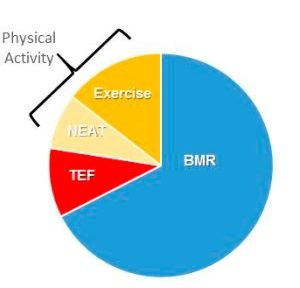
TABLE OF CONTENTS
- Nutrition Principles
- The 4 Pathways for Successful Fat loss
- 6 Step Nutritional Approach
- Energy Balance & Calories for Fat loss
- Meal Timing
- Breakfast
- Intermittent Fasting
- Flexible Dieting
- Diet Breaks
- Re-feeds
- Reverse Diet
- Protein
- Carbohydrates
- Fat
- Alcohol
- Tracking Calories & Macros
- Hydration
- Oxidation Rate
- Food Intolerances
- Digestion
- Supplementation
- What to Avoid Eating
NUTRITION PRINCIPLES
Nutrition is fuel for your body, it provides health, vitality, recovery, improves workout performance & is integral in reaching our physique goals. Calories don’t need to be feared, they need to be strategically managed.
Once calorie & macronutrient targets are set up specific for you, your goal & current training phase you can enjoy food again. Whether you are looking to add weight to your frame or drop body fat, we can now start working hard in the gym & allow the results to naturally take place. These nutritional targets will be adjusted from time to time to maximise efficiency & ultimately dictate the rate of change & how we feel doing it.
Real whole food should make up the majority (80+ %) of your diet. That is the foundation of the LIVE FIT nutrition guide & coaching system. Organic food is my recommendation especially through a cutting phase. Chemical free nutrition grown on healthy soil can offer up to 40 times more nutrient density. Organic food from your local farmers market is the freshest, cheapest & most nutrients dense option so I consider it the gold standard.
High quality organic food will help us to stay healthy & vital, has no pesticide sprays which is always going to be a huge step forward in health, assist detoxification pathways & self-love.
Nutrition is 75+% of a result! The training very much helps the speed of the result & enhances or maintains the shape of the physique as the body fat comes off but without a sensible set up to match the training system the training programming can only do so much. Training can & will have a huge impact on the rate of a result but only if the nutrition is dialled in, without a sound nutrition plan there is often no result.
Without a calorie deficit there is simply no fat loss! No matter how many times we go to the gym per week our body WILL NOT drop body fat if we are not in an energy deficit. It is physiologically impossible.
Because there is a ceiling on how much we can train (energy out) & recover effectively from, there must be some form of control when it comes to the amount of energy being consumed to achieve a drop in body fat.
My goal is to help you achieve the body fat percentage you have dreamt about, get strong doing it and ultimately reach optimal health. Changing your body shape or improving performance is just a by-product of getting healthy!
With quality periodised nutrition set in place specific to you, covering total calorie consumption & macronutrient targets results are achieved quickly but usually only if you’re tracking accurately. In this nutritional guide I go into detail on how to do that effectively so read through the guide very carefully.
It takes a little practice, planning and awareness around different foods to dial this in correctly.
This is where you will make a lot of your progress while following my HOLISTIC PERSONAL COACHINGING PROGRAM, so in this guide I have eliminated all the guess work for you. I want everyone I work with to feel as though they have all the answers, a clear understanding of how to execute everything properly, precisely & with minimal stress.
The majority of people these days are over stressed, sleep poorly & their digestive function is not optimal. High levels of inflammation & insulin resistance to carbohydrate consumption is a real common problem, over consumption of dead calories has become the norm, these are all things we may need to address together.
If these all-important nutrition & lifestyle foundational considerations are not at the top of our priority list from day one, we begin the program on the back foot & in my experience if a transformation does not produce a solid positive result in the first 2-3 weeks there rarely ends up being a transformation at all!
Motivation is lost & excuses take over!
4 PATHWAYS FOR SUCCESSFUL FAT LOSS
- Sleep
- Stress management
- Nutrition
- Training
The difference between those that easily crush a transformation with amazing results & those that struggle to achieve their goals comes down to how much effort, focus & commitment is put into all 4 pathways.

Often those who are motivated & want to change their physique are good at focusing on the training pathway, training is very important but without focus on all 4 pathways results will always be sub-optimal.
Training is still very important to create the physical changes in body composition that we are looking for but it can only be as effective as the focus & effort put into optimising sleep, managing stress levels & following a nutritional plan tailored specific to you.
SLEEP
Sleep is the most important intervention we can use to aid a fat loss transformation; without optimal sleep a fat loss transformation will feel like dragging your own two feet through the mud most days.
Most people don’t sleep well or go to bed early enough. If we want to train in the gym like an athlete, we must sleep like one too. Athletes prioritise sleep & recovery as much as training itself.
The fastest way to reduce STRESS is to improve SLEEP! The better we sleep the easier everything is to deal with.
Sleep is crucial in the training & recovery cycle; if we don’t sleep optimally our body will not adapt as favourably from the training stimulus & we build up a level of fatigue quite quickly. With fatigue comes fewer effective workouts & a lack of motivation.
More importantly sleeping soundly will also increase compliance levels significantly; when we sleep optimally the hormone Leptin stays elevated. Leptin is the primary hormone associated with satiety.
Just one bad night’s sleep will see stress levels rise, leptin levels & satiety will drop, when satiety levels drop, we feel less satisfied & full from what we eat and are much more likely to overeat, sabotaging compliance to the plan.
The leptin hormone has an inverse relationship with the hunger hormone, ghrelin. Whenever leptin drops, ghrelin rises. This is not where you want to be, compliance nose dives & your physiology basically hijacks your brain, emotions rise, & it becomes much harder to stick to a plan.
So, as I mention above getting ideal sleep every night is a prerequisite to creating long lasting physique changes & needs to be focused on until it’s achieved night after night.
The important point to understand about sleep for 99% of people is that the reason they are not getting a great night’s sleep is simply due to what they are either currently doing to prevent it or not doing to create it.
Meaning the quality of your sleep each night is in our own hands.
The most common reason I see as to why people have so much trouble sleeping is the inability to ‘switch off’ & the reality that life is so “switched on” all day every day.
Think about a standard day, we have a task or appointment that needs be completed virtually on a constant fifteen-minute cycle & then even when we have a few minutes spare we often rush to fit something else in to keep up with what needs to get done – it’s complete madness!
It’s not really living, it’s more like surviving! I don’t want to survive; I want to thrive!
This has become city living reality but is neither how things used to be, healthy nor sustainable & will lead to weight gain via poor choices, health concerns & emotional instability.
THERE ARE A FEW KEY AREAS WE MUST FOCUS ON TO OPTIMISE SLEEP!
- Daily relaxation / stress management.
- A solid bed time routine.
- Sleep based supplementation
WHAT DOES OPTIMAL SLEEP LOOK LIKE?
- Do you go to bed around 10pm each night & fall asleep within 10 minutes?
- Do you stay asleep without waking up in the middle of the night?
- Do you wake up naturally around the time the sun comes up each morning without your alarm and jump out of bed with a good amount of energy ready to start your day without coffee?
CREATING A BED TIME ROUTINE
Creating a solid bed time routine is a game changer for a lot of people, it’s about giving our evening some structure in preparation of naturally getting tired when we are supposed to through creating an unwinding relaxation effect on the central nervous system.
When this is created, cortisol (the hormone that keeps us awake) will naturally lower, serotonin & melatonin rises & desire to sleep is the result.
Those that say they are most awake / productive at night & are not morning people just have a circadian rhythm (sleep pattern) that is out of its natural rhythm & are often doing the opposite to what I am going to suggest below to create a good night’s sleep.
This routine below works & works well; I have successfully used it in recent years with myself and many clients from around the world.
Here is the recommended bedtime routine:
Step 1 @ 8:00pm: Turn off your phone, the TV and laptop.
This is hard for a lot of people, but it is a crucial step to reclaiming your sleep back.
Phones, TV’s and laptops have blue lights that flash “its day time” at our brain which shuts down melatonin (sleep hormone) production.
Step 2 Between 8-9pm is when we connect with friends, family & loved ones.
We practice being in the now & leave all things on the “to-do” list until tomorrow.
Step 3 @ 9pm take sleep supplementation.
The supplements recommended are listed below in the supplement section.
Often people take them too late – I suggest taking them 30 minutes before bed.
Step 4 @ 9-920pm it is time to relax with some stretching, breathing, meditation or a warm bath.
Whatever you find calming is perfect!
Step 5 @ 920-10 is to go to bed & read a book
Ideally something that does not stimulate or excite you, if you don’t enjoy reading you are in luck; this will work even better for you!
Most clients that can’t usually fall asleep will often fall asleep before 10pm if they have done all the sleep preparation steps above correctly.
Once you have created this routine & sleep quality returns you don’t have to be so diligent with the steps above, your body will naturally start to calm down at these times.
If you notice though that it is becoming less natural to get the type of sleep quality you need simply focus carefully on the process again until it returns.
If you want to take your sleep focus to the next level l recommend an Oura Ring, the rings collect data that includes sleep quality, depth of sleep, heart rate variability, & a total readiness to exercise score every morning.
I consider mine a great investment, being able to gauge the impact everything I do has on my body is amazing data to have at my fingertips every morning.
IF YOU IMPROVE SLEEP YOU IMPROVE STRESS.
STRESS
It is said by many very intelligent people that in 2020 we have approximately one hundred times more stress than only four generations ago did. Stress, either good or bad requires a response in our nervous system.
The more total stress we carry around each day the harder it is to recover & the less effective the training stimulus is likely to be.
Our body is tightly regulated by the autonomic nervous system; this system is always monitoring what is happening through our five senses. The autonomic nervous systems job is to balance our physiology out between being calm and high stressful situations.
EXAMPLES OF STRESS INCLUDE:
- Late nights or a lack of quality sleep
- Financial difficulties/worry over money
- Poor body image
- Relationship problems
- High pressure work environment/not enjoying job/doing it for the money
- Moving house
- Poor air quality, water & nutrition.
- Dehydration
- Smoking, alcohol & recreational drugs
- Over-training/under recovery
- Social media
- Resentment, regret, worry & fear-based thoughts
- Environmental pollutants
- Chemical based cleaning products
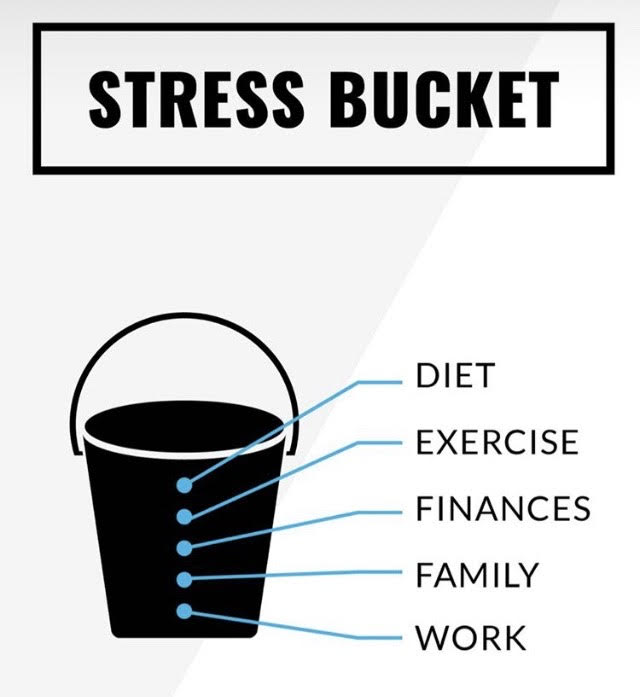
When any of these stressors above are activated our body perceives it as danger. The human brain has not evolved that much since the days as hunters and gatherers. Back then, we mostly just worried about finding food or being attacked by animals.
We had a choice to fight, or run away as quickly as possible. In the world we live in today our stress is vastly different. It’s less physical, and much more emotional.
Every day we encounter small stresses from our partners, colleagues, boss, financial situation, body image pressure, social media, the environment and every time our physiology is wound up or tense.
These stressors accumulate unwanted load into the system.
This is why meditation & relaxation time is essential; relaxation calms our emotions & nervous system. Once we are in control of our emotions, we can literally achieve anything!
THE AUTONOMIC NERVOUS SYSTEM
The parasympathetic side is where we are relaxed, happy, can think clearly and digest food optimally.
This side of the nervous system is where all of our daily requirements of physical repair take place; the parasympathetic side of the nervous system keeps us young & healthy. Apart from when we are training or exercising this is the side of the nervous system that we are supposed to spend the majority of our life in, especially if optimal health, performance & physique development is the goal.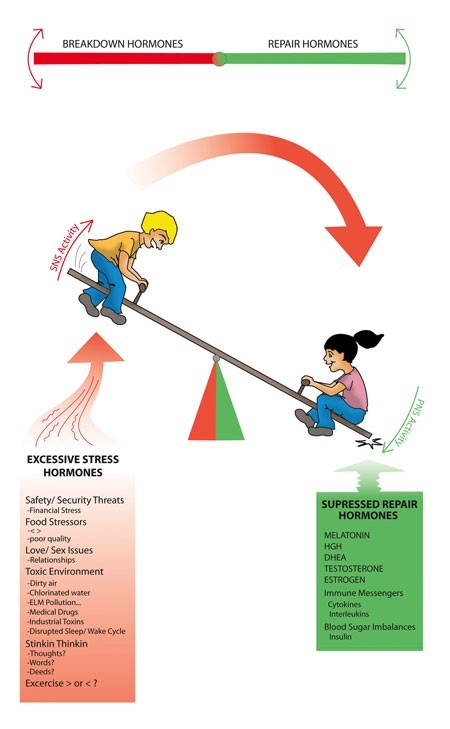
The sympathetic side of the nervous system is our stress response; you will find anxiousness, rushing, poor sleep, poor memory, sub-optimal digestion & a lack of clarity here.
Not all stress is bad, but the way we go about our day to day these days with traffic, mortgages, to-do lists, relationships, over training, late nights, dehydration & poor food quality we end up spending the majority of our time there. This is a big part of the reason why so many people get sick & have low vitality.
Ideally, we want this side of the nervous system red lining (if vitality & wellbeing is high) when we train or exercise to achieve physique goals. Once the training session is over though that’s it, we want to return to the parasympathetic side of the nervous system ASAP!
The problem is this doesn’t happen; we finish our workout & continually chase the clock for the rest of the day. This is why I recommend that my clients take five full minutes in the recovery position to end each & every workout.
Here we focus on some basic tempo breathing to slow the breath rate down, signalling to our nervous system that the workout is complete & restoring a sense of inner calm. The central nervous system focuses on our breathe rate for feedback, anytime you want to calm down simply slow your breathing with a very slow inhalation through the nose for 4 seconds, hold the breath for 4 seconds, exhale slowly but fully out either your mouth or nose for 8 seconds then then pause for another 4 seconds before you repeat the cycle.
4-4-8-4
PLEASE, DO NOT DRINK COFFEE POST WORKOUT.
When STRESS HORMONES are elevated consistently there are responses that occur that alter how quickly we will favourably respond to even the best nutrition & training programming.
Get your body into a parasympathetic state
This is where we want to be ‘living’. This involves calming and/or stress mitigation activities. The concept of training the house down is all well and good, but if you are already stressed it can make your stress response worse.
This is why I often start clients off with a low training volume, slowly building them up in each phase & then de-loading them when necessary. We want to attack stress management first, and as that improves, we can drive up training volume.
The key is to push hard, but only when healthy, and not before.
Remember, we want fat loss but we also want to feel & sleep well too!
RELAXATION THAT WORKS!
- Spending time in nature
- Breathing techniques
- Meditation
- Ice baths & Cold showers
- Yoga especially Yin yoga
- Stretching
- Slow walks
- Reading
- Guided meditation
- Massages
- SLEEP
- Laughing / comedy shows
- Music / singing
- Acting like a kid
- & just time out with your feet up
Below is a step by step approach to setting up your own energy requirements specific to you & your goals.
The clients that focus on this part of the program are the ones that produce optimal results, I haven’t written ANYTHING below that I don’t see as important so read through it slowly, if you are not sure of something let me know.
6 STEP NUTRITIONAL APPROACH
STEP 1 – TOTAL DAILY CALORIE TARGET
To first workout your approximate Total Daily Energy Expenditure (TDEE) CLICK HERE.
There is a question that asks about “activity”, for our first phase together in most cases we will be working off the option MODERATE EXERCISE (3-5 times per week). Through TDEE estimations we are able to establish our body’s baseline calorie requirements for the amount of activity we generally do or in some cases are about to do per week. To get started simply answer the 6 questions specific to you to see what your approximate score is.
Baseline calories are also known as our maintenance calories, the amount of energy we can consume on average per day and not gain or lose weight. This number is very important, along with your current body fat percentage (see below) as these two mostly dictate the best calorie deficit start point specific to you.
Generally speaking, the more over weight a client is the more aggressive we can set the start point.
TDEE INCLUDES:
- BMR (Basal Metabolic Rate) refers to the energy our body needs to stay alive (at complete rest) Every system & organ consumes energy just to keep the lights on each day.
Our BMR is the most dominant factor in relation to our TDEE. “We burn more energy living than lifting”
- Daily Scheduled Activity is the energy we burn during structured training & exercise.
This accounts for the lowest amount towards TDEE – yes you read that correctly.
- NEAT (Non-Exercise Activity Thermogenesis) refers to all incidental activity we do on a daily basis. The energy we burn outside of our planned training, like cleaning the house or washing the car as an example.
NEAT is the most variable factor in relation to TDEE and the easiest to adjust. This is why setting a daily step target is so important.
- TEF (Thermic effect of food) it also costs the body energy to digest; assimilate & eliminate everything we eat. The digestive system requires a large amount of energy just to run each day.
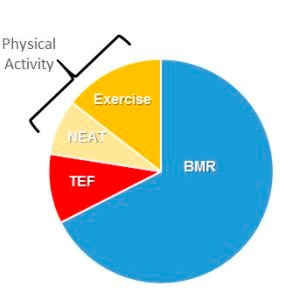
BODY FAT PERCENTAGES
To establish your calorie requirements, we need to decide on an approximate body fat percentage via the pictures below, or it can be tested which I recommend doing either by Dexa Scan or calliper skin fold testing.
If you’re going to take an approximation know this, it is very common human behaviour here to under estimate your body fat percentage. Be honest with yourself, your body fat percentage plays a big role in an ideal calorie deficit to achieve the fastest results possible & it is often at least 4-5% higher than we think or want it to be.
By sending me your initial photos I can help you get this pretty close without having to spend money on testing.

STEP 2 – DAILY PROTEIN TARGET
Males require 2g x by their current total scale weight in KG’s.
Females require 1.6g x by their current total scale weight in KG’s.
NOTE: These numbers will be set as part of the program you’re currently on with Live Fit, the protein targets need to be set specific to your recent history of consuming protein, your current body fat percentage & the training programming I have set up for you. The numbers above are just a guide.
STEP 3 – DAILY DIETARY FAT TARGET
1g of dietary fat x by your lean body mass (scale weight minus your body fat percentage) is your minimum daily target; I do not like anyone going below this a day over a weekly average. Dietary fat supports hormonal balance, something that needs to be looked after through a cutting phase.
So, if you’re 100kg & 20% body fat this example person’s lean mass would be 80kg’s & therefor their minimum fat intake per day would be 80g.
The more weight you have to lose the higher the percentage of dietary fat you will start with, the leaner you are the closer to the minimum number it usually becomes & we focus on carbohydrates to fuel training & recovery.
STEP 4 – DAILY CARBOHYDRATE TARGET
Carbohydrates will be person & training phase specific but they will usually make up what is left of your total daily calorie targets after setting both protein & fat prior. Including more filling complex carbohydrates like rice & root vegetables to make up the majority of your daily carbohydrate target will be my recommendation.
STEP 5 – DAILY FRUIT, VEGETABLES & FIBRE TARGET
Five servings of a variety of different fruit or vegetables each day is my minimum daily recommendation.
If you are hitting the above, the approximate 30g of daily dietary fibre you require will be covered without any concern or need to track.
STEP 6 – DAILY WATER TARGET
Hydration is a pretty simple topic which many of us overlook.
Simply put, water is a key ingredient to human life, & hydration is a foundation necessity of optimal performance and recovery. Our muscles are largely made up of water & our cells can’t produce energy properly unless they are hydrated.
The bodies cry for hydration is often confused with hunger, which makes it harder to stick to the plan & often will encourage people to eat more. This is obviously not what we want in a cutting phase, I need you hydrated everyday as a priority.
How much should we be drinking to be properly hydrated? 50 ml of filtered water x by your bodies scale weight in KG’s is your daily target for someone active. So, @70kg scale weight, 3.5 litres per day would be your target which sometimes can sound like a lot & can take a couple of weeks to build up to.
ENERGY BALANCE & CALORIES
The most important & fundamental first step of any successful transformation program is establishing our very own total daily energy expenditure score & then creating a caloric deficit.
The only way to achieve fat loss is by creating an energy deficit. So, what is a calorie deficit?
A calorie deficit simply involves burning more energy than we eat or drink each day, which creates an internal energy deficit, much like a car without enough fuel but in the bodies situation it can turn to stored energy (body fat) as a reserve fuel tank to keep the body moving & running important processors that can’t just be put on hold until next time we eat.
An energy (calorie) deficit is the only way for fat loss to occur, it is that simple. If someone is not in an energy deficit fat loss is impossible. Eating healthier isn’t necessarily a one-way ticket to losing weight. You cannot lose fat without being in a caloric deficit!’ Have I now said that enough times? ?
To understand what being in a calorie deficit means, I need to also point out the energy ‘out’ part of the equation – it is something that needs to also be looked at closely. You can be on a low-calorie diet & not lose weight because of the energy out component. If you don’t move much you don’t burn as much energy & the calorie deficit you may think you are in is either much smaller or not really a deficit after all.
Fat loss often slows down in a lot of people after the initial 4 weeks.
There are two main reasons why.
- The plateau is often related to a lack of energy out or no focus around structured training & daily step targets.
- Metabolic adaptations – a natural slowing of the metabolism in response to less calories in (which I will get to later). Sometimes this is the position a new client presents themselves to me, when years of yo-yo dieting has taken its toll. Prior to working together there is often a phase we need to go through to establish the health of your metabolic rate & often need to rebuild it before we can move to an effective fat loss phase.
A simple understanding of energy balance would be: If a person generally moves more each day & has a healthy amount of training volume, they have created a greater degree of spending energy for themselves. In this situation the person then will be able to drop body fat with a higher daily calorie target.
This set position is much more optimal & helps progress past the initial month in a dieting phase.
When we are not tracking both energy in & energy out closely results become a bit of a guessing game. We need to know what we have been doing. This will guide me to know what is needed next.
Every change we make on our journey together in terms of how long we cut for, how aggressive the energy deficit has been & how much training volume it has taken to produce the changes is all valuable information to us to assist in continuing to progress week to week.
In my view as the coach, the transformation hasn’t been a complete success until at least double the amount of time it took to achieve the goal has passed & the client has been able to maintain the result.
This will include a period of time post transformation we call the reverse dieting phase; this is the phase that really cements the transformation.
Usually at the end of a fat loss phase, metabolic rate has dropped & our body been now primed to put weight back on, this is why so many attempts fail. There must be an exit strategy from the transformation to rebuild metabolic rate (reverse diet below) to avoid putting the weight back on.
Fast initial fat loss can often be achieved when someone is highly motivated at the beginning of a fresh start & decides to stop over eating & make smarter choices with or without tracking. Things then often slow down & now neither client or I are certain of the most optimal next step to break the plateau because there is no data to manage. We don’t know exactly what was happening, what has changed or should be changed.
YES! Sometimes calories need to go up temporarily to break a plateau, it’s not as black & white as just eating less & less over 10+ weeks, negative metabolic adaptations occur from dieting & need to be managed.
Eating ‘clean’ is great, however having little or no understanding of how many calories or what macronutrients you are actually eating each day to fuel training is more often than not why people get stuck & don’t end up achieving their body shape goals from a nutritional stand point.
This is why I believe tracking your food intake at least initially is so important. Tracking what you are eating does not have to be a life sentence, it is a very important tool used to keep a client honest, on track & in charge. It is my recommendation at least in the early stages for two reasons.
- To assess metabolic health / rate of the client (are they in a position currently to drop body fat?)
- So, the client gets a clear understanding of the macronutrients & how much energy is in what they choose to eat each day, why they have put on weight in the past & how to now hit their targets. It creates a clear understanding of their very own energy requirements.
Once this has been done for long enough & the client is closer to their dream physique most clients have moved on from tracking & can estimate quite closely everything they eat. They understand they have an energy budget each day & they learn how to manage it better.
This is a position of power!
MEAL TIMING
Meal timing was once thought to be a crucial component to achieving fat loss or any body shape changes. With new research available these days showing conclusively that it is less important than we once thought I like to give my clients much more freedom around when & what they choose to eat. 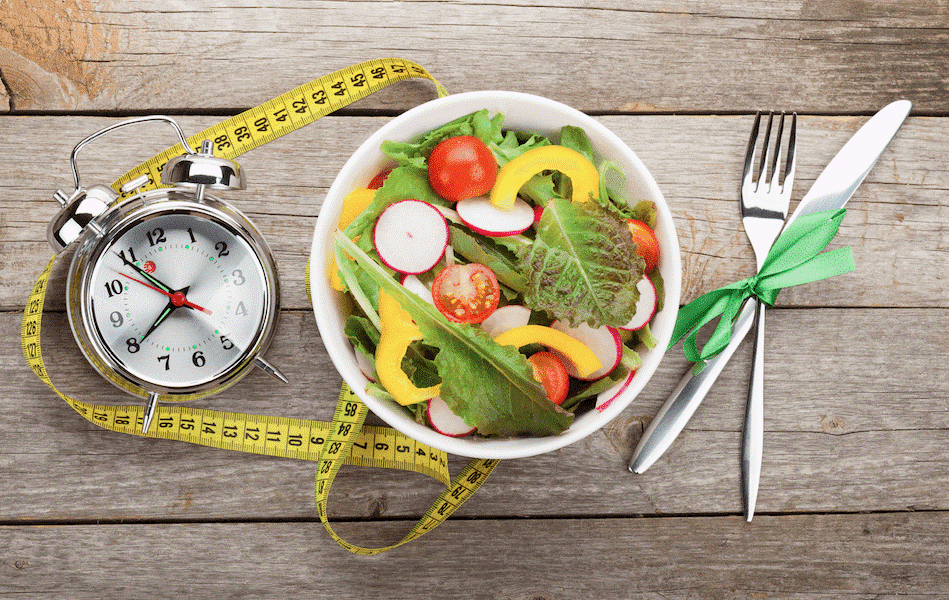
Once again, the main focus just needs to be around hitting both macronutrient (protein-fat-carbohydrates) & total calories targets each day with ideally clean whole nutrient dense food.
If you want to intermittent fast you can, if you feel better on 6 smaller or 3 bigger size portions over the course of the day that is also fine. It’s the targets that count. There is definitely a place for specific meal timing especially for lean intermediate to advanced clients looking to go to the next level. The leaner & stronger you get the more positive specific meal timing strategies can be.
But for the purpose of this program I want you to feel like you have the choice with how you set up your meal strategy.
“If the total calories are the same for the day” – eight small meals do not speed up our metabolism any more than having say 2 or 3 bigger meals & eating carbohydrates at night will not create weight gain any quicker or slower than having them in the morning.
In saying all of the above though, there are some basics that I feel is worth sharing.
- Split daily protein target fairly evenly in ideally each
- I like 4 meals per day for most people to maintain energy & balanced blood sugar levels.
- Avoid snacking between meals, it is healthy for the digestive system to have breaks throughout the day.
- Avoid eating carbohydrates on their own.
- Eat approximately 90 minutes pre training unless working out at 5am, obviously you will train either fasted or with something very small in the morning.
- Have at least 30-40g of protein & carbohydrates in your post workout meal / shake approximately 30-40 minutes after finishing the training session, it is often more optimal to wait half an hour for the nervous system to calm down & optimal digestion to return before eating a big meal.
- If you sleep well have most of your carbohydrates around your training.
- If you sleep poorly have at least 50g of your carbohydrates for the day in your last meal around 2 hours before bed.
- Eat vegetables with most meals.
- Chew your food to liquid! This starts the digestive process into action, not chewing your food properly has shown to disrupt digestion & will leave you feeling less satisfied from a meal.
- ALWAYS eat in a relaxed state, if you are not relaxed wait until you are to eat.
- Minimise water intake around meals – up to 20 minutes prior or 45 minutes after eating is ideal.
- Choose complex carbohydrates over simple
BREAKFAST
We often get told that breakfast is the most important meal of the day – & like everything it “depends”
I do agree that having a nutrient dense breakfast to kick things off is a great way to start our day, but when it comes to a dieting phase (calorie deficit) I leave the timing of my client’s first meal to when its best suits them & they feel like they want to eat. This may change on a day to day basis, as I have now mentioned many times when it comes to fat loss if the total calories are controlled for the day it does not matter. 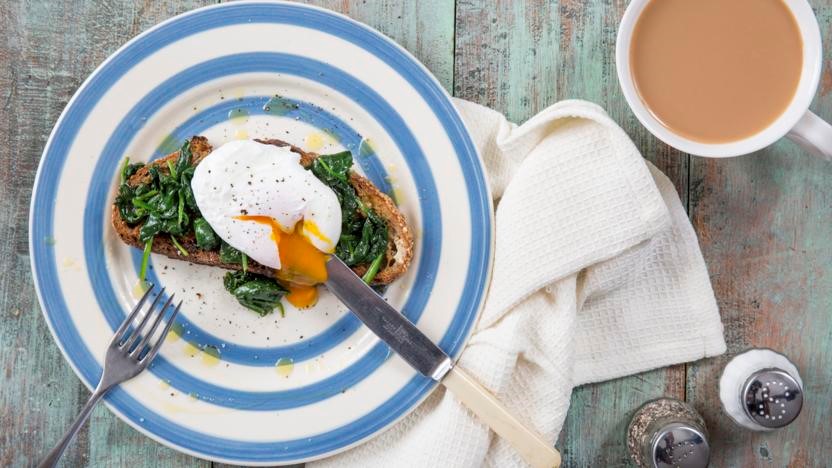
For those that prefer a lighter or later breakfast that is what I would recommend you do. If I was to tell someone to eat when they don’t feel like eating in a cutting phase, I am most likely setting that person up to fail / over eat – research proves it.
This is why being a great coach is recognising a client’s nutrition is very individualised, something isn’t optimal if it doesn’t fit the individual’s lifestyle or daily routine.
INTERMITTENT FASTING
Intermittent fasting is just another tool in the tool box.
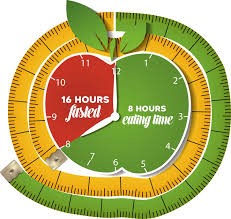
It is no better or worse than any other nutritional approach when calories over the course of each day are equal. If skipping breakfast & eating more in the PM is your preference then that system is going to be easy to stick to.
When training early mornings with high training volume food is important though otherwise performance, progress & recovery can suffer, so intermittent fasting all morning after a 6am workout would not be my recommendation.
Strength adaptations drive body shape changes so eating around your workouts will always be my advice if training in the morning. We must fuel, train & then refuel.
The take home message in this section is that the best system for you is often the easiest one to follow as far as meal timing goes. Choosing to stick to your macros in a 4,8- or 12-hour eating window really comes down to personal preference.
It does not change the actual rate of the result.
Intermittent fasting may impact how easy it is to stick to your targets either positively or negatively depending on the individual, how you feel sticking to a smaller feeding window is very person specific especially when cutting. Intermittent fasting is definitely something we get better at with practice & as we naturally get closer to a healthier weight range blood sugar management improves & going without eating for longer periods of time feels much more manageable.
If you have never tried fasting my recommendation initially is to start slow, just push back your first meal of the day by about an hour & progress it from there by feel.
In this guide book I only discuss intermittent fasting as one of many options for managing a fat loss phase, intermittent fasting has many health benefits but I will save that for another day.
I will finish this section by saying this though, I believe eating in a smaller eating window each day is definitely worth looking into from a health perspective, we shouldn’t really be eating on & off all day from 6am to 9pm.
Cutting our eating window down to at least 10 hours per day no matter what time we start & finish could be very beneficial; the body has its own internal cleaning system that is only activated properly when there is no food passing through.
FLEXIBLE DIETING
Flexible dieting is often miss-understood; it is not a licence to eat rubbish while controlling total calories each day! 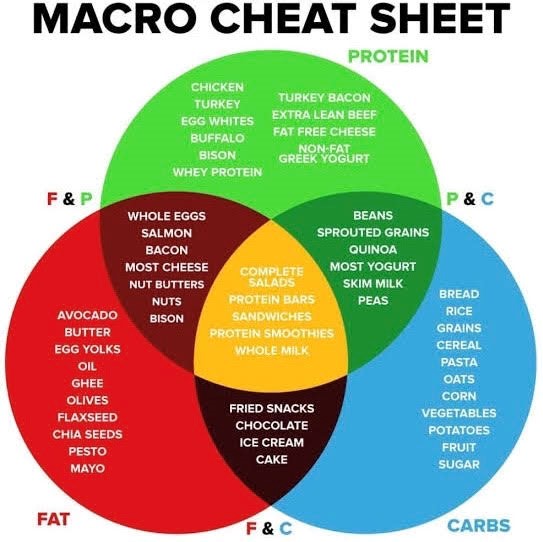
Flexible dieting puts the control of foods chosen for each meal into the hands of the person going through the transformation. I have been using a flexible dieting approach myself & with my clients for over 10 years now & it just makes it so much more fun & easier to stick to the plan.
Meal plans are dead these days & results are improving significantly. There are three important things to consider & focus on achieving when following a flexible dieting approach.
- Hitting total calorie allowance (not under or over)
- Hitting minimum protein & dietary fat requirements.
- Getting enough vegetables / fibre
As much as I am always recommending my clients to eat clean whole foods it opens up a much more realistic approach for the weekend or a social occasion allowing for a glass of wine or an ice cream on a hot day while still staying 100% on track & continuing to win each day.
Having the option to make foods we enjoy fit into our daily energy budget in my experience greatly improves the chances of success of a diet from a long-term sustainability point of view.
Flexible dieting is tracked via an APP which you will read about below, it teaches us how many calories & what macros are in everything we eat, this puts us in the driver’s seat because knowledge is power!
Research shows that a lot of people under estimate their calorie intake by as much as 40%, so learning how to track accurately becomes a complete game changer.
DIET BREAKS
A diet break will usually last anywhere between 3 & 14 days. It all depends on how long we have been dieting for, how aggressive the calorie deficit has been, how the client is feeling, the deadline & how lean they are.

A diet break for the most part is strategic in nature, designed to offset the negative adaptations to metabolic rate through periods of under eating. Diet breaks are something I nearly always include at some stage in my approach to getting clients shredded.
After a period of lower calories, the body’s natural systems begin to slow things down by altering hormones, muscle protein breakdown can become more of an issue late in a dieting phase (the ratio of muscle to fat loss) & hunger & satiety begins working against us. Basically, from a primal survival response in the body, the body begins running off less energy (lower metabolic rate) things that are not considered urgent in the bodies systems are put on hold or slowed down because the body sees continual dieting as a life-threatening situation.
Metabolic rate drops, we become hungrier and are much more likely to have increases in sugar/junk food cravings & in general we experience a reduction in the will to continue sticking to the plan.
The body is doing its best to force us to find food & eat it. Not ideal for our goal!
The energy out component of energy balance often falls as a consequence; we begin moving less in general without even realising it, we go into conserving energy mode. This is why a daily step count especially in the second half of a transformation is essential to keep seeing results & not plateau. Steps should slowly keep increasing to offset the negative adaptations, allowing them to decrease is asking for a plateau to occur.
Research shows that 3 days is a good / minimum amount of time required to start to reverse or at least slow down the effects of the dieting phase. Diet breaks are a period of time where a client’s maintenance calories are recalculated & set with an increase in specifically carbohydrates to boost things back to a more optimal level.
Carbohydrates will increase leptin levels (satiety hormone) which will help thyroid hormone output & begin to boost metabolic rate.
In my opinion a lot of low thyroid output problems is a consequence of under eating, over training & not managing stress optimally & can often be improved just through working in these key areas.
A diet break is not a feeding frenzy! Weight gain should not really occur, perhaps a little water weight from the increase in carbohydrates, it is simply a “pause” on dieting to then go back into the calorie deficit & see a return to faster results once again with a boost in metabolic rate.
As I always say “do not live in a calorie deficit” – you will feel tired, training performance will suffer & life will just suck!
REFEEDS
Refeeds are often confused with a diet break, a refeed is different! A refeed can be as little as a single meal, up to usually 2 days in length of increased calories. 
Boosted back up to or around the individual’s recalculated maintenance level energy requirements. This is most often strategic in nature & part of a well thought out long term sustainable plan. The increase in calories again will come from mostly carbohydrates.
A refeed is not going to have that much of a positive impact on leptin levels & metabolic rate. It may help slightly but a refeed is more to reboot a little energy & mentally have something to look forward to occasionally.
A refeed is just as much about the psychological aspect of being in a calorie deficit, sometimes it does become hard work sticking to a calorie deficit week in & week out. Having a day or a weekend here & there to break up the monotony & enjoy more food is something to look forward to & helps keep clients training hard & on track. Keeping my clients feeling like they are doing everything right & “winning each day” is an important mindset to continually aim for, this is why these are planned & part of the process from the start.
The best time to plan a reefed is obviously once it is earned or with a big social occasion coming up perhaps – a time to pause the diet, enjoy a little more food & hit the reset button mentally.
This allows for a more sustainable approach to achieving & keeping the results you earn. In my experience a lot of people under eat consistently chasing their goal & when they do over eat it, they feel shame & think they have blown all their hard work, sometimes it’s actually exactly what they might need to push their physique to the next level in the coming week. This is something we would normally plan for together off the back of weekly feedback & social occasions.
REVERSE DIET
So, what is a reverse diet & when is it our best option? There are two main times when a reverse diet is the best approach to take. They are basically the same thing but at different stages.
- Once we reach your dream physique & have finished the fat loss transformation.
- In the situation where we start our journey together, you are wanting to drop body fat but you have been already under eating for some time, possibly over exercising too but the scales just won’t budge.
This is incredibly common! So much so that I would estimate 75% of my female clients especially would start our journey together with some sort of reverse diet & health, metabolic rate reboot. For some this might be a quick 4-week thing, for others it may take longer. There is no getting around the laws of how the body works. Eat more & metabolic rate will rise, eat less & there will be a lowering in the rate of the metabolism & the function of the thyroid. Some people adjust up & down quicker than others.
This is why both starting & ending a cutting phase with a sensible reverse diet strategy is a must.
Most people can actually lose weight if they want to, research conclusively shows though that around 95% of people who lose weight cannot keep it off long term. Psychologically people tend to reach their goal, relax with their nutrition & after usually 10+ weeks of structure it is fair enough too.
The problem is though, at the end of a dieting phase metabolic rate is usually low, we are now primed to put weight back on unless a reverse diet strategy is implemented. You go out for a few drinks, end up having a pizza the next day & your one day off turns into nearly a week.
All of a sudden you have undone a fair bit of your hard-earned work. You feel like you failed! Slowly but surely weight increases, does this sound familiar?
This is where the reverse diet at the end of a fat loss phase works beautifully, remember I told you that if we increase how much we eat metabolic rate will rise? it just needs to be done strategically.
There needs to be an EXIT STRATEGY from any fat loss phase if you want to maintain your result long term, the longer you maintain your shape the stronger your new set point becomes.
Everyone’s set up will be slightly different but I want to offer a basic guide on how it is done so you get the idea.
Let’s say we finish our fat loss phase on 1650 calories, or you come & see me at our initial consultation & you are only eating 1100 calories & not losing any weight.
Remember the TDEE calculator at the top of this eBook? I would simply recalculate what you should be able to eat without gaining any weight & make an educated decision weighing everything up on where to adjust things to.
I usually like to be conservative at least initially with a small increase if the client is feeling relatively healthy & happy. If the maintenance calories worked out at 2250 for my client finishing her or his cut, I might bring things back up to 18-1850 calories as a start point for a week.
If the new client that is stuck on 1100 calories has a maintenance calorie of 1950, (small person) week one I might plan for 12-1250. It really does depend on the person & how worried they are about putting on weight & how much belief they have in what I am suggesting that needs to happen. The goal remains the same for both, slowly increase calories back up to their maintenance calorie requirements without putting on ANY weight. The rate that we do this is very person specific but it’s not magic, metabolic rate adjusts as we adjust things.
PROTEIN
- Protein offers the highest rate of satiety, meaning when we eat protein, we feel fuller compared to eating the same value of energy from any of the other macronutrients.
- Research has also shown that protein will support the retention of lean mass when dieting, which is pretty important when it comes to achieving long term fat loss, remember the goal is fat loss – not weight loss.
- Protein is split up in each meal fairly evenly throughout the day.
- Red meat is high in acetyl-carnitine so it’s perfect for the AM to help switch the brain on.
- Red meat takes longer & is more difficult to digest so if your digestion is not optimal, I recommend using a slow cooker.
- White meat helps raise serotonin so it’s a suitable choice post workout & especially in the last meal of the day to aid sleep.
- If you don’t normally eat as much protein as I am recommending, I suggest building it up slowly over a couple of weeks & using things like fresh lemon juice or ACV as part of a dressing to aid digestion.
- Animal protein needs to be chewed to liquid; the older you are the more important this becomes.
- It is my recommendation to get at least 60% of your daily protein target from animal proteins, this again is something that can be a target over the first week or two if your diet has been deficient in protein.
- Protein shakes should ideally be limited to one per day, ideally post workout for convenience.
- Protein powder should only be consumed if you can digest it effectively, there is no point drinking whey if you can’t digest it properly.
- There are many organic vegan protein powder options these days that nearly everyone digests well. Discuss this with me & we can make a suitable choice to fit your needs.
- BCAA supplementation is not something I use; I have in the past but the research is all over the place for their effectiveness so it’s not something I see as worth spending my money on – real food always wins.
- I recommend spending a few extra dollars on organic grass fed & most importantly “grass finished” animals, commercial animals are sick & terribly unhealthy, a sick animal = a sick human.
- If eating animal meat is not your thing, we will just need to be a little more diligent with food combining.
PROTEIN TO INCLUDE:
- Beef
- Buffalo
- Casein, vegan & whey protein powder if you can digest it well
- Chicken
- All seafood, younger fish are better for lower levels of mercury
- Crocodile
- Duck
- Game meats
- Kangaroo
- Lamb
- Pork
- Turkey
- Veal
- Venison
- Whole eggs/egg whites
CARBOHYDRATES, FIBRE & VEGETABLES
- Carbohydrates are NOT the enemy; in fact, in a lot of cases they are essential to get an optimal result.
- Carbohydrates are the bodies preferred fuel source, when fat, protein & carbohydrate is available in the blood stream the body will always choose carbohydrates first because it is more of an instant energy source.
- Carbohydrates drive metabolic rate more effectively than the other macronutrients
- Carbohydrates drive libido & anabolic hormones
- Carbohydrates improve sleep & relaxation
- Carbohydrates increase training performance, output & recovery.
- There is really only two times when carbs should be avoided
- When you are on a ketogenic diet or attempting to go into ketosis, this is when the body is forced to run off ketones (fat) because there is little to no carbohydrates available over several days.
- If body fat percentage is above 40% insulin sensitivity is terribly poor, in fact it means there is a real resistance to carbohydrates as a good fuel source, therefor a restriction to carbohydrates initially is sometimes something I suggest.
- Complex carbohydrates are the best choices for managing blood sugar levels & keeping you feeling full.
- High glycaemic carbs like dates, honey & fruit in general are best kept for post workout once body fat percentages have dropped to a healthy weight range.
- If you do not sleep well, I suggest back loading a good percentage of your carbohydrates to the last meal of the day, carbohydrates help increase serotonin, and serotonin is the precursor to the sleep hormone melatonin.
- 5 servings of vegetables per day is the minimum requirement, vegetables help detoxify the body; they come loaded with vitamins & minerals to keep you healthy, vital & include fibre to keep you regular. If you are not having a bowel movement at least every single day we have work to do & I need to know.
- Vegetable variety is important, we all have our favourite foods but when in a calorie deficit it’s especially important to have a wide variety of vegetables & different colours.
- Every time you shop aim to buy 3 vegetables that you have not eaten in the last two months.
- Vegetables are best eaten when in their natural season.
CARBOHYDRATES TO INCLUDE:
- Brown rice
- Gluten free pasta
- Rice Cakes
- All vegetables
- All fruit
- Quinoa
- Wild Rice
- White rice
- Chillies
- Lettuce (all types)
DIETARY FAT
- Fats are often misunderstood.
- Fats are not making you fat, eating too many calories in total is what increases body fat percentages.
- Dietary fat will no more lead to weight gain than carbohydrates or protein will if eaten in a total calorie surplus.
- Fats are integral to building our sex hormones like DHEA, testosterone and oestrogen.
- Having good sources of fat in our diet like coconut oil, MCT oil, ghee, grass fed butter, animal fat, eggs, tallow, duck fat, olive oil, avocado, nuts, seeds, olives & some cheese’s (these are in priority order) is incredibly important, we make good cholesterol from having adequate amounts of fat in out diet and through cholesterol our sex hormones are synthesized.
- Our sex hormones need to be firing optimally to obtain optimal health and then in turn we are more able to train hard. This will be accomplished by staying above the daily minimum I set out for you above & having a good balance of saturated, polyunsaturated & monounsaturated fats.
- Saturated fats were wrongly accused back in the 80’s for causing heart & CV disease, these days that has been proven false over & over & over again, I would go as far to say if the quality is good saturated fat is the most important for hormonal balance, stress management & overall general health.
- As a male, low dietary fat intake can & will lead to lower testosterone levels, which often will affect training drive, mood, libido & the potential for an increase in lean muscle mass.
- As a woman, low dietary fat intake will also affect hormones, women’s hormones are much more sensitive and this is why especially for females I insist on a minimum daily average of dietary fat to offset the often-unstable oestrogen levels around the menstruation cycle which can often lead to total loss of period – This is NOT a good place to be!
DIETARY FAT TO INCLUDE:
- Almonds, brazil, cashews, hazelnuts, macadamias, pecans, pistachio, pine & walnuts.
- Avocado
- Avocado oil
- Duck fat
- Grass fed Butter
- CLA
- Coconut oil
- Feta
- Flax Seeds
- Ghee
- Macadamia oil
- MCT oil
- Nut spread
- Olive oil
- Olives
- Lard
- Tallow
Pay close attention to the list further down (things to avoid) especially the oil’s I recommend not including in your diet if optimal health, vitality & performance is what you are after.
ALCOHOL
This section was initially not included in this guide book, but I was often getting questions around alcohol after it was read. Letting go of alcohol for at least the time it takes to create something great physically & mentally as a Coach is a no brainer. For some people it can be tough to do so, so I thought I might explain from the Coaches perspective why not drinking alcohol or at least minimising it as much as possible is almost essential to make optimal progress when it comes to reducing body fat.
As we have learnt through reading this guide to obtain a drop in body fat there must be an energy deficit created, that deficit will vary slightly person to person but the average is usually around 4-600 calories per day, any more than this amount often leads to it being unsustainable & binge eating will occur, anything less & the results are so slow that people lose interest. We are searching for what we call the SWEET SPOT.
If we average a true 500 calorie deficit per day for 7 days in a row our total deficit for the week is 3500 calories which will equal a body fat reduction of 1 pound or 0.5kg. With great training programming & a step target each day I usually average numbers higher than that with clients but these numbers are usually the minimum I expect to see if everything is on point.
Let me paint a situation for you, you do well all week by sticking to your 500-calorie deficit per day, the weekend lands & you end up having a few drinks both on Saturday night & Sunday arvo over lunch or dinner with friends.
Usually with alcohol poorer food choices are made which is fine occasionally but with poorer food choices comes much more calorie dense meals & your goal of a 500-calorie deficit each day ends up being a 500-calorie surplus on both Saturday & Sunday which is very easy to do & a quite small blow out. 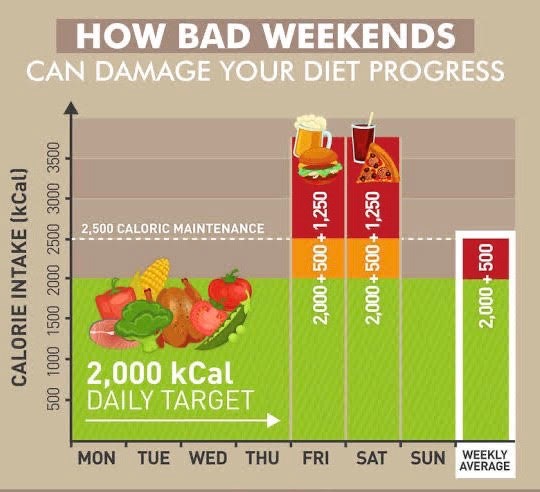
Now let’s review the total week with & without the alcohol.
Without Alcohol: You stick to the same plan you had going during the week, maybe you eat out a little more often with friends but the 500-calorie deficit continues with sensible choices & you finish the week strong with a total energy deficit of 3500 calories.
Congratulations your body has changed!
You wake up on Monday morning FRESH, proud of the choices you have made over the last week, you got plenty of relaxation over the weekend & your sleep was solid.
You are motivated & excited to do it all over again because you can see it is working.
With Alcohol: As above, not only do you spill over your calorie deficit targets but you go 500 calories above your maintenance level, (maintenance is the energy amount where you won’t lose or put on weight) in this situation your total energy deficit for the week is now only 1500 calories at best.
Like I mention above this is a very conservative example, it is very easy to blow the entire week.
You wake up on Monday morning tired, unmotivated & in need of coffee or more sleep. You drag yourself to the gym but you are not training anywhere near the intensity you are capable of; you get home & look in the mirror but you don’t see any change. You are now annoyed with yourself because you were doing so well, this can be a viscous cycle to get caught in, it is a cycle I know all too well.
I spent a big part of my 20’s trying to get leaner while drinking most weekends, just to write that in this guide 20 years on is embarrassing. I spent the best part of 10 years trying to achieve something I could have done in 6-8 weeks, the only reason I include that in here is because I know so many other people are in exactly the same boat. It’s not even that I didn’t know how, it was purely that my priorities at the time were elsewhere so I strongly recommend looking at your own priorities around changing your body shape, do you KINDA want to change your body shape or do you REALLY want to?
I’ll start after my birthday, or Xmas or Summer – the problem is the TRUE COMMITMENT to the goal never comes, often due to a lack of belief, excuses, self-sabotage or a coach that actually knows how to get that individual to their goal. 
These days I believe very strongly in the words DO or DON’T, words like I’ll try, give it a go, do my best or see what happens just are not going to cut it in most cases. Everything in life worth having requires some sacrifice, a commitment & a plan that works.
When I set up a client’s macros (carbohydrate, fat & protein) & calorie target’s they are all set for a reason specific to the person & the style of training they are doing. Let me explain a little further, lets say a client has been set a 50-25-25% split like in the picture.
The resaon for this split would be decided mostly by two things.
- The person it is for, which would include considering their body weight, body fat & personal preferences.
- Secondly the style of training programming I have chosen to use for them to help reach their goal.
Different training stimulus require different macronutrients to fuel the workouts properly so performance is high & to allow for adequate recovery.
When in a calorie deficit chasing fat loss, we are already under supplying our body with nutrients to keep us healthy & fuel our workouts. So, to add in a glass or two of wine every other night & stay in the energy deficit we are then going to have to take that from our 219g of carbohydrates per day (in this example) & quite often that is the difference between recovering & making progress from the last workout, sleeping soundly & feeling on top of your game to do it all again the next day.
The fresher you feel each day the eaiser it is to achieve your goal – It really is that simple!
- If you are not sleeping well it is harder to stick to a calorie deficit.
- If you are not recovering from your workouts it is harder to stick to a calorie defciit.
- If you have a higher level of stress in your life ATM it is harder to stick to a calorie deficit.
- If you drink alcohol it will be both harder to stick to a calorie deficit while drinking & the next day.
IF YOU WANT TO LOOK LIKE AN ATHLETE YOU MUST THINK & OPERATE LIKE ONE TOO! – at least until you reach your goal anyway, maintaining your body shape is a lot easier than changing it.
#commit&goallin!
TRACKING CALORIES & MACROS
When it comes to tracking calories & macronutrients it is the single most important step to focus on closely for a successful transformation! But unfortunately, the most neglected.
For me to be able to gather information each week about how your body is responding to both the training programming & nutritional set up I start you on, it’s important to focus on getting this dialled in quickly & accurately each day – without it, we are guessing & hoping for the best!
You will NOT live in a calorie deficit the entire time, that is setting you up for a rebound effect post our time together & is the out dated harder & slower version of successfully dropping body fat. Included in my services I offer 3 options for tracking your daily calorie consumption.
- HOLISTIC PERSONAL COACH meal planner is an excel spread sheet with a huge data base of food choices that has been triple checked for accuracy. Adjust your food preferences yourself to what you feel like eating on a daily basis or set up multiple days & just rotate it to simplify things.
- My Fitness Pal, this is the most commonly used option due to its easier on the go mobile application.
There are a few things you need to know about MFP though, firstly it’s terribly inaccurate if not used properly.
The data base of foods comes from me, you & anyone else that has used the APP over the years; initially everything you eat needs to be checked.
As an example, let’s say you were about to eat 100g of raw chicken breast, simply put into Google “raw chicken breast nutritional table” or “raw chicken breast calories”.
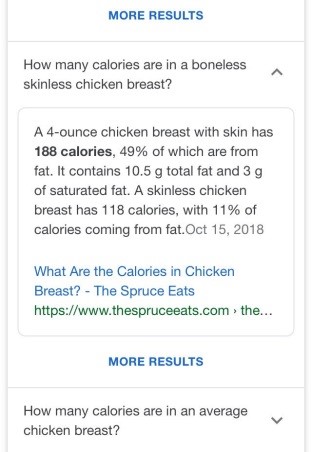
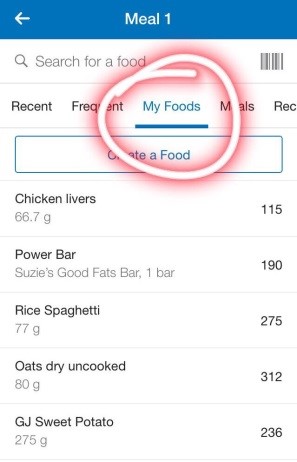
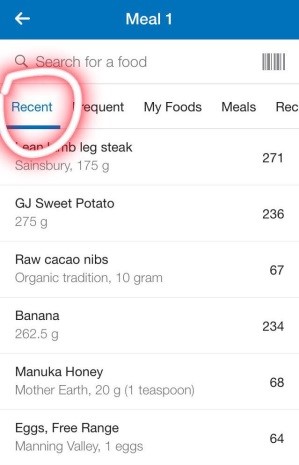
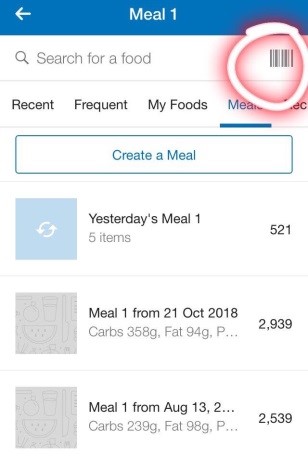
Most foods will have a listing & it will be fairly accurate.
This is definitely pretty tedious initially but once you get the hang of it & start storing food that is accurate in the “recent” list or “my foods” on the my fitness pal APP you build a data base of your own food choices that you can refer back to very quickly rather than searching for the same foods over & over each day.
There is also a barcode scanner as part of the MY FITNESS PAL software, the APP will scan the barcode for you & give you an exact breakdown of what you are about to eat.
Calories & Macro percentages are both easily adjustable inside the APP.
- Click on “Calories Remaining” on the food diary home page
- Click on “Protein”
- Click on “Goal”
- Click on either “calories” or one of the macronutrients to adjust.
- Once you adjust the % or calories to how you want them you MUST click the TICK to complete.
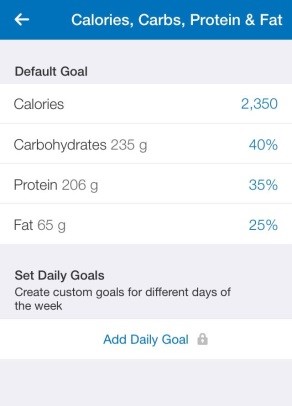
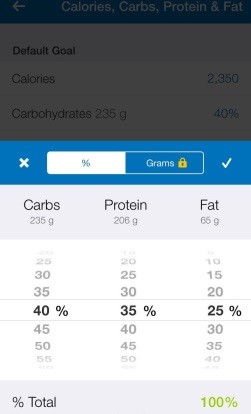
The whole idea of tracking what you eat each day is to do it accurately so every time you don’t do the above or guess what something weighs results can & do suffer!
You will need to get yourself a set of digital kitchen scales that you can pick up in any supermarket these days for around $20.
I see this as vital at least initially; I always encourage clients as a minimum to track diligently for at least four full weeks at the start of their transformation, this will create a stronger understanding of what is what from a macronutrient & total calorie perspective meal to meal. To optimise results I believe it is worth doing from start to finish, it keeps clients accountable to their goal.
Once you have tracked calories & macros for a few months you become a human calorie counter & can often guesstimate what you are eating quite closely. Ideally though this should be saved for post transformation, once you look how you want to look & I put you in a consolidation phase so your physiology gets comfortable at your new body fat percentage set point.
- I have a third option for those not to savvy with computers & smart phones, its old school pen & paper with another very accurate data base of foods to choose from. You will receive all three as part of your program.
WATER / HYDRATION
- I cannot stress how important it is to start your day & continue throughout the day staying hydrated. Results are heavily impacted by those not drinking enough water each day. Sleep, stress & hydration are the foundation that everything else works off!
- If you have access to a water filter definitely use it! Tap water quality is poor! Tap water is full of chlorine, heavy metals & fluoride, all things in my opinion that should be avoided.
- In my opinion Reverse Osmosis water filtration is the best. Prices start from $280 for a sink top model & I see it as an investment in our health, longevity & performance.
- High performance humans require high performance water; after all we are at least 70% water ourselves.
- It is estimated that 70+% of all DR’s appointment worldwide can be traced back to low vitality, fatigue & dehydration!
- Start your day with 500+ ml’s of room temperature water, the juice of ½ a lemon & ¼ of a teaspoon of high-quality Celtic or Himalayan sea salt.
- Drink water up to 20 minutes before eating & a good 45 minutes after each meal – avoid big amounts of water around meal time.
- It is recommended when using a good filtration system to re-mineralise the bare drinking water with high quality salt.
- Avoid soft drink, ideally including diet soda
- Avoid caffeine after mid-day
- Avoid milk if you don’t feel good on it or digest it well
- Avoid alcohol
- Coconut water is a great choice
- Sparkling mineral water with lemon & mint leaves is also a good choice
OXIDATION RATE
Separate to our metabolic rate (metabolism) our oxidation rate is the speed at which we actually metabolise the nutrients we have just eaten for energy. This will impact how we feel on more or less carbs & dietary fat in our diet. Even though protein does also have calories, it is not considered a direct energy source so below we are just discussing fat & carbohydrates.
There is a 70% rule in life
About 15% of people are true fast oxidisers. Fast oxidisers feel good on a high fat Ketogenic diet.
These people oxidise (burn through) nutrients relatively quickly, dietary fat in comparison to carbohydrates is a slower absorbing energy source & gives these people the balance they are looking for from food. We are always looking for a feeling of balance, to feel good & satisfied from the food we eat – sustained energy!
If you give these people a high carb meal, they will metabolise it too quickly. They won’t feel satisfied & find themselves back in the fridge within no time of eating searching for something to satisfied them. This is not ideal when wanting to stick to a calorie deficit meal plan for fat loss. In this situation we will often run out of calories for the day quickly & end up going over.
About 15% of people are true slow oxidisers. Slow oxidisers work better on a faster fuel source like carbohydrates.
Because these people oxidise nutrients slower carbohydrates is a better fuel source for them as it digests faster & leaves them feeling full & satisfied for longer. It gives them the balance they are looking for from food. These people on a diet high in fat & low in carbohydrates will feel sluggish, they need a more instant energy source like glucose, carbohydrates will balance them out.
Our fat & carbohydrate macro split will not determine our rate of fat loss. It will purely dictate how we feel on the plan, how easily we can stick to it & how effectively we can train. I want to also point out though that different training strategies ideally require different energy sources, as an example eating a low carb diet when doing metabolic training should involve more carbohydrates than normal otherwise performance & recovery will suffer.
How do you work out your oxidation rate?
Pay attention to how you feel after eating different meals is my advice. Use your intuition first, if the idea of a pork belly & creamy sauce often sounds good to you, you are probably closer to a fast oxidiser & need fat to make you feel balanced after eating. If you always tend to choose lean meats & root vegetables or grains there is good reason to think you are a slower oxidiser.
It’s important to know how you feel after each meal, the better you dial your meals in to what makes you feel satisfied for longer the easier sticking to the plan becomes. This is where I ask you to pay attention to everything you are eating, write down how you feel after each meal. Do this for two weeks, it will help pin point your sweet spot.
The remaining 70% of people will do well somewhere in the middle, this is why I set guidelines towards fat & carbohydrate targets but these are two macronutrients we often play with. Eat intuitively & gauge how we feel afterwards. Did you stay full, energised, focused, satisfied & content for a good 3+ hours after a solid sized meal? If the answer is yes, those macronutrients probably worked well for you. Search for that sweet spot!
You can have a fast metabolism & a slow oxidation rate; they are separate & need to be viewed that way.
The better I can coach you to feel into how fuel makes you feel the easier the process of dropping body fat & sticking to a calorie deficit for a fat loss plan becomes because you feel more satisfied from everything you eat.
FOOD INTOLERANCES
Food intolerances these days are common, a big deal & they do slow down rate of fat loss if consumed regularly just through feeling sluggish, bloated & less motivated. 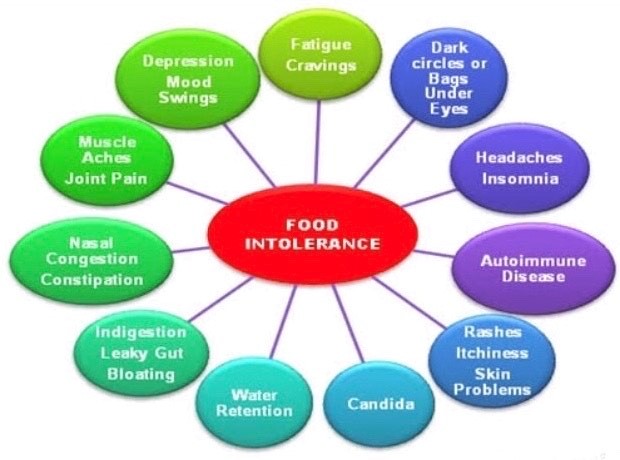
Any food that you eat, no matter how healthy it is on paper, if it is causing YOU any digestive stress, bloating, gas, heaviness, diarrhoea, constipation, cloudy thinking or you just get a sense that it isn’t working well for you as a fuel source I recommend not eating it!
Avoid these foods, I have a list of foods myself that most people would consider very healthy but they are not healthy for me at the moment so I don’t eat them & I feel much better doing so.
Avoid these foods for 3 weeks initially & see if your digestion improves, if you feel an improvement, I recommend then avoiding them for a further 3-6 months to reduce the inflammatory response being currently created. After this time slowly reintroduce in small amounts & see how they go then.
It is common that the foods that we eat regularly, the ones we crave, the foods we can’t go without, are the ones that we need to look at first. Things like but not limited to bread, milk, nuts, eggs, grains, dried fruit & often a wide range of vegetables cause bloating & gas. Eating food that causes digestive stress will impact the results you achieve because they cause inflammation in the body, anytime you can reduce inflammation in the body you will always train harder, feel & look better.
Food intolerances are different to a true food allergy; intolerances can be quite dynamic (like the human body), they can come & go with the seasons & the level of stress the body is currently experiencing.
In my experience the lower your overall level of stress is (especially mental & emotional stress) the less of a problem people tend to have with food intolerances & digestive issues in general.
OPTIMISING DIGESTION
Optimising digestion is very individual & is a topic that even the best researchers in the world still don’t have the complete picture on or definitive answers to many regularly asked questions.
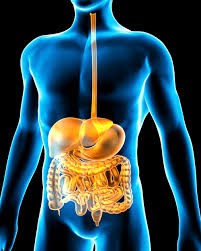
When I talk about digestion it includes the entire process from mouth to anus. A lot can go wrong in this very complex system. There are some basic recommendations I believe that does make a big difference in a large percentage of people that I work with.
To have optimal digestion, assimilate, absorb nutrients & eliminate waste effectively we must start at the very beginning – we must chew our food to liquid. This is often over looked because on paper it seems too simple to be effective. We live in a fast-paced world, chewing food effectively is something that just doesn’t happen like it once did.
Each mouthful needs to be chewed to a point where it is swallowed as liquid. Chewing food is the first internal phase of digestion, if food is not chewed to an optimal level the second phase of digestion (the stomach) can then not do its job effectively & there will be a following on effect all the way through the system.
Eating must be done in a relaxed state, eating on the run is asking for digestive stress. Mindful eating goes a long way to a smooth digestive process. When we sit & really enjoy our food properly & chew it effectively it sends internal signals to release things like digestive enzymes & stomach acid.
I have found intermittent fasting or time restricted eating to be an effective way to reduce digestive stress & inflammation. The longer food does not pass through the digestive system the more the body’s natural sweeping system can do its thing removing unwanted food particles & bacteria. I believe just about everyone would benefit from a smaller eating window each day & the occasional 24-36 hour fast.
As I mention in the food intolerance section of this eBook removing food that is obviously not working for us would be something that we should all be doing. Gas, bloating, cramping, diarrhoea & sometimes constipation are all strong body signals to notify us that the chosen fuel is not currently working.
In saying that I have noticed personally & with many clients that digestion can & will improve the calmer someone is, when their training volume & recovery capabilities match & they sleep soundly. Bad digestion can just be a signal saying out load – slow down, you are over doing it! Get some rest.
SUPPLEMENTATION
It’s important to understand that there is no such thing as a magic pill or supplement, supplements are exactly that – supplemental to a healthy diet & should be viewed that way.
I see them as an insurance policy at best & often just a waste of money.
The reality is that the supplement companies will try & sell you just about anything if they think you will part with your hard-earned cash, in most cases don’t bother.
In saying that there are a few common things worth spending our money on if needed & if you are to buy any supplements ever, buy quality. You get what you pay for in this world & supplements are no different.
SUPPLEMENTATION RECOMMENDATIONS (if needed only)
- Magnesium is pretty much a must for everybody, especially those that exercise often, magnesium glycinate or threonate chelates are both calming in nature, aid sleep quality & suppress cortisol.
- Zinc is responsible for 200+ enzymatic reactions in the human body, zinc aids in boosting anabolic hormones like DHEA, testosterone and also aids in immune system health.
- Probiotics are a good option to attempt to keep a healthy digestive system functioning well. It is my experience though if the digestive system isn’t healthy, healthy options like sauerkraut & kombucha can often cause more harm than good. I’m not a fan of taking powdered pro-biotics without prior stool testing.
- Inositol & Adreno-plex (if recovery, adrenal fatigue or sleep is an issue) Like magnesium, these help with lowering the stress response. They also aid recovery of the central nervous system.
- Multivitamin can be a sensible insurance policy these days to help avoid deficiencies forming, a multi is a great way to boost micronutrient levels. Search for an organic powdered form of multivitamin.
- Vitamin D Vitamin D is responsible for over 300+ processors in the human body & we are often deficient.
- Krill or Fish Oil to promote a more positive mood & lower inflammation.
- Collagen (hydrolysed) by Great Lakes for Gut & tissue Health. Bone broth soup being an even better option.
This is just a very basic list; things are often customised for an individual where & if needed but generally speaking I try to avoid supplements as much as possible.
WHAT TO AVOID EATING
- Hydrogenated oils, vegetable oils (canola, sunflower, safflower, sesame seed, rice bran, corn, grape seed, peanut, soybean & cottonseed)
- White processed sugar & artificial sweeteners
- Bread & wheat-based products unless it is lacto fermented or sourdough
- Soy (soy lectin or flour) or any soy protein alternatives
- Corn starch
- Maize
- High fructose corn syrup
- Potato starch
- Egg powder
- Refined table salt
- Grain fed animal meat (grass fed & grass finished being the gold standard)
- Diet, low fat, skim or fat free products
- Milk solids
- Milk powder or non-organic milk dairy
- Artificial additives including all preservatives
- Cheap synthetic supplements
- Farmed fish – wild caught is best
- Gluten if it’s a problem for you
- Processed quick cook grains
- Protein powders that are full of rubbish
- Alcohol
- & all food typically found in the isles of the supermarket with a used by date of more than a week.
Now, let’s get to work! 🙂

